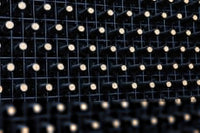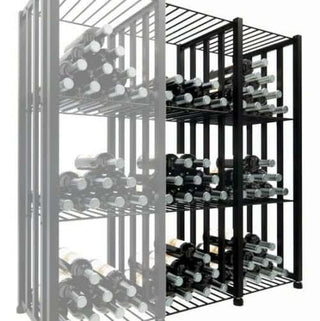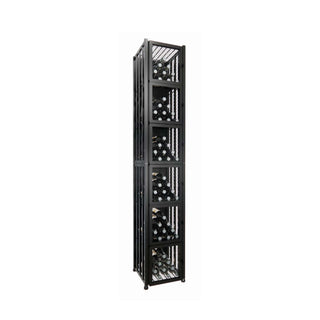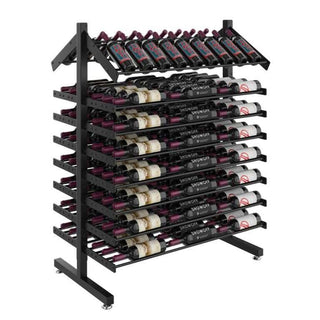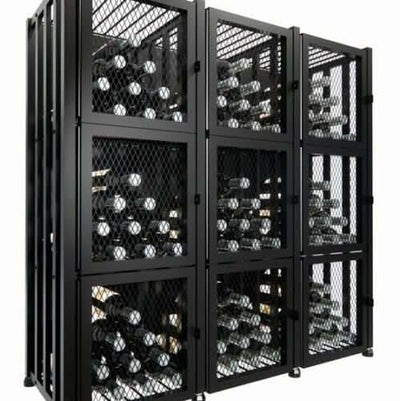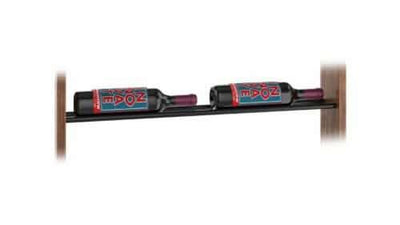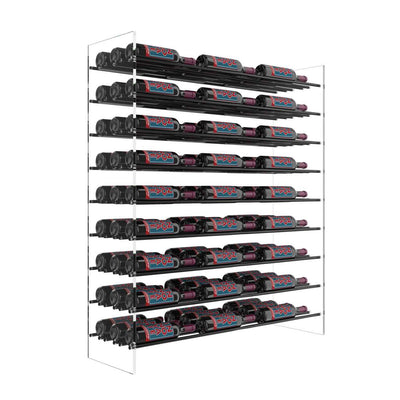Sipping Through Time: A Vintage Journey Through the History of Wine
This captivating journey delves into the origins of winemaking, dating back thousands of years, and navigates through the significant epochs that have shaped wine's role in human civilization.
Wine is a living artifact of our shared human history. This 2500-word journey will take you through the ages, from the very origins of winemaking to the contemporary trends shaping the wine world today. Buckle up as we explore the captivating history of wine.
Table of Contents
- Ancient Origins: The Earliest Beginnings of Winemaking
- Medieval and Middle Ages
- Renaissance and Exploration
- Modern Era
- Wine in the 18th and 19th Centuries
- The Phylloxera Epidemic: A Crisis and Transformation
- The 20th Century: Iconic Regions and Global Recognition
- Contemporary Trends
- Sustainability and Organic/Biodynamic Practices
- Global Expansion of the Wine Industry
- Wine Criticism and Ratings
- Wine in Popular Culture
- Wine as an Immersive Experience
- Frequently Asked Questions about the History of Wine
- Why is the history of wine important?
- What was the original purpose of wine?
- Why is wine called wine?
- Who originally created wine?
- Which wine came first?
- When was wine first used?
- Who was the first to drink wine?
- What does wine symbolize?
- What defines a wine?
- What is the significance of terroir in winemaking?
- What are the main types of wine, and how do they differ?
- How should I store wine at home to preserve its quality?
- What is the aging potential of wine, and how do I know when to open a bottle?
- How does food pairing work with wine, and are there any basic guidelines to follow?
- Conclusion

Ancient Origins: The Earliest Beginnings of Winemaking
Our voyage begins in the mists of time, some 8,000 to 6,000 years ago. The earliest evidence of winemaking dates back to ancient civilizations in Mesopotamia.
Archaeologists unearthed clay jars adorned with traces of fermented grapes, marking the earliest known winemaking endeavors. These ancient Mesopotamians were the pioneers, experimenting with the transformation of grape juice into something more, something magical.
Wine in Ancient Egypt: A Gift from the Gods
But our story doesn't stop there. It extends further, casting a spotlight on ancient Egypt, where wine was not merely a beverage but a profound part of their cultural and religious fabric.
In the land of pyramids and pharaohs, wine was considered a gift from the gods themselves. It was used in religious rituals, where it symbolized life, death, and rebirth. It was a libation offered to the deities, a practice that highlighted the divine significance attributed to this precious liquid.
Wine was also an integral part of daily life, gracing the tables of both commoners and the elite. In ancient Egypt, the lines between the sacred and the mundane were beautifully blurred by the presence of wine.
The Greeks and Romans: Elevating Wine to Divinity
Now, let us fast forward to ancient Greece, a civilization that elevated wine to a sacred plane of existence. In the heart of this ancient world, wine was not just a beverage; it was a divine elixir.
The Greeks worshipped Dionysus, the god of wine and revelry, with fervor and passion. Dionysus represented the very spirit of wine - its intoxicating, liberating, and creative essence. Greek vineyards stretched across the landscape, meticulously tended by vintners who understood the profound role they played in the culture.
Wine in ancient Greece was not merely consumed; it was celebrated. It flowed freely at symposia, extravagant banquets where philosophers, poets, and statesmen gathered to indulge in both wine and intellectual discourse. These gatherings were fueled by the belief that wine had the power to inspire creativity and unlock profound insights.
Meanwhile, across the Mediterranean, the Romans, renowned for their love of excess and grandeur, took the torch from the Greeks and ran with it. They recognized the potential of wine not only as a cultural emblem but as a symbol of power and civilization.
Roman legions carried the art of viticulture and winemaking with them as they conquered new territories, spreading the vine far and wide across Europe. Roman wine production was extensive, with vast vineyards and ingenious winemaking techniques. The beverage became an integral part of Roman life, from everyday libations to lavish feasts.
In the ancient world, wine transcended its humble beginnings, becoming a force that intertwined itself with the very fabric of culture and civilization. Its journey had only just begun, and it was destined to traverse continents and epochs, evolving and adapting with each passing age.
The allure of wine would continue to captivate humanity, from the sacred rituals of Mesopotamia to the symposia of Greece and the grand banquets of Rome, laying the foundation for a tradition that would persist throughout history.

Medieval and Middle Ages
During the Medieval and Middle Ages, a significant transformation occurred in the world of winemaking why, and monasteries emerged as the focal point of this evolution.
Monasteries and the Monastic Tradition
Monks, recognized as the custodians of knowledge during this era, assumed a pivotal role in safeguarding and progressing the intricate craft of winemaking. Their contributions left an indelible mark on the history of wine.
Monastic involvement in winemaking went far beyond mere production. Monks dedicated themselves to honing and refining the art of winemaking, conducting extensive experimentation and research to enhance the quality and consistency of wine.
These dedicated individuals meticulously recorded their findings, creating invaluable written records that became the foundation for future generations of winemakers.
Wine Trade and Its Cultural Impact
The impact of monastic winemaking extended well beyond the walls of the monasteries. Wine trade routes crisscrossed Europe, connecting regions and cultures through this cherished beverage. The flourishing trade in wine not only bolstered economic ties but also enriched cultural exchange.
Wine became deeply ingrained in the fabric of European society, serving dual roles. On one hand, it was associated with opulence and luxury, enjoyed by nobility and aristocracy during grand feasts and celebrations. On the other hand, it permeated daily life, providing sustenance and refreshment to people from all walks of life.
This period marked the emergence of wine as a cornerstone of European culture, where it transcended its role as a simple beverage and evolved into a symbol of tradition, craftsmanship, and conviviality.
The contributions of monks and the flourishing wine trade laid the groundwork for the rich and diverse world of wine that we appreciate today, carrying the legacy of their expertise and dedication through the ages.

Renaissance and Exploration
During the Renaissance, a period spanning from the 14th to the 17th century, the world of winemaking underwent a remarkable transformation. This epoch was characterized by a resurgence of intellectual and artistic pursuits, which had a profound impact on various aspects of human culture, including wine production.
Scientific Advancements and Innovations
One of the significant contributions of the Renaissance to winemaking was the application of scientific knowledge and innovation to the craft. This era saw the emergence of a more systematic approach to viticulture and oenology.
Winemakers began to better understand the factors influencing grape cultivation and wine fermentation, leading to substantial improvements in wine quality and consistency. Innovations in barrel-making were particularly noteworthy during this time.
Barrels, made from oak, replaced traditional clay amphorae for Wine storage and aging. This change not only enhanced the aging process but also added complex flavors and aromas to the wines, marking a pivotal development in the history of winemaking.
The Age of Exploration: Expanding the Wine World
Simultaneously, the Age of Exploration was unfolding, bringing about a profound expansion of the wine world.
As explorers ventured into uncharted territories, they carried grapevines with them, introducing them to the Americas and various other parts of the globe. This transcontinental exchange of grape varieties and winemaking techniques had a lasting impact on the wine landscape.
In the Americas, vineyards were established, and indigenous grape varieties were cultivated alongside those brought from Europe. This cross-pollination of grape varieties eventually led to the creation of entirely new wine styles, such as the rich and robust wines of California's Napa Valley.
In essence, the Renaissance and the Age of Exploration were pivotal moments in the history of winemaking. Scientific advancements and the adoption of barrels improved wine quality in Europe, while the global expansion of viticulture forever altered the diversity of grape varieties and the wine map, leaving a legacy that continues to shape the wine industry to this day.

Modern Era
The modern era marked a dynamic and transformative period in the world of wine, characterized by both triumphs and challenges. Let's delve deeper into the key developments of this time.
Wine in the 18th and 19th Centuries
In the 18th and 19th centuries, wine continued to play a prominent role in European society, evolving into a symbol of national identity for many countries. Wine production and consumption became deeply intertwined with culture and tradition. This era witnessed the establishment of wine classifications and appellations, which laid the groundwork for today's wine regulations and quality standards.
The Phylloxera Epidemic: A Crisis and Transformation
However, this period also faced a devastating crisis with the emergence of the Phylloxera epidemic. Phylloxera, a microscopic insect, attacked grapevine roots and nearly wiped out European vineyards.
This catastrophe led to widespread replanting of vineyards with American rootstock, which were resistant to the pest. It reshaped the viticultural landscape and, in some cases, led to the rediscovery of forgotten grape varieties.
The 20th Century: Iconic Regions and Global Recognition
The 20th century brought about a renaissance of sorts for the wine world. Iconic wine regions like Bordeaux and Burgundy in France, Napa Valley in the United States, and many others gained international recognition for producing wines of exceptional quality and character.
Grape varieties such as Cabernet Sauvignon, Chardonnay, and Pinot Noir became household names among wine enthusiasts. Wine culture flourished during this era, with the emergence of passionate connoisseurs and collectors.
The art of wine tasting and appreciation reached new heights, and wine auctions became significant events. Wine tourism became a growing trend, drawing travelers to picturesque vineyards, wineries, and tasting rooms to savor the pleasures of the vine firsthand.
The modern era was marked by a dynamic interplay of tradition and innovation. While wine retained its cultural significance and historical roots, it also adapted to changing consumer tastes and global markets.
The resilience displayed during the Phylloxera crisis and the continued pursuit of excellence in winemaking have solidified wine's enduring place in our world, making it more diverse and accessible than ever before.

Contemporary Trends
The 21st century has ushered in a wine renaissance that continues to redefine the world of wine in remarkable ways. This era is characterized by several prominent contemporary trends.
Sustainability and Organic/Biodynamic Practices
Environmental consciousness has become a driving force in winemaking. Many vineyards and wineries have adopted sustainable, organic, and biodynamic practices to minimize their environmental footprint. These approaches prioritize soil health, biodiversity, and the use of natural farming methods, resulting in wines that reflect a deeper connection to the land.
Global Expansion
The wine industry has truly gone global, with countries like Argentina, New Zealand, Chile, and others making significant strides in wine production. These regions have carved out unique identities and gained recognition for their distinct terroirs and grape varieties. The global wine map has expanded, offering consumers a diverse array of choices.
Wine Criticism and Ratings
Wine critics and rating systems have gained substantial influence in the industry. Their reviews and ratings can greatly impact consumer preferences and purchasing decisions. This has led to a focus on achieving high scores and recognition from influential critics, which, in turn, has driven winemakers to strive for excellence.
Cultural Integration
Wine has become deeply ingrained in popular culture. It frequently appears in movies, books, and television shows, often as a symbol of sophistication and pleasure. Wine appreciation has also become a subject of fascination in its own right, with wine courses, tastings, and sommelier certifications becoming more accessible and popular.
Wine as an Experience
In the 21st century, wine is an immersive experience. Wine tourism has flourished, with visitors flocking to vineyards and wineries to explore the art of winemaking, taste exquisite wines, and enjoy picturesque landscapes. Wine is not just about taste; it's about the stories, cultures, and traditions that surround it.
In essence, the contemporary trends in the wine world reflect a dynamic interplay of tradition and innovation. While respecting the centuries-old practices of winemaking, the 21st century has brought about a new era of sustainability, global diversity, and cultural integration, making wine a rich and evolving part of our modern lives.

Frequently Asked Questions about the History of Wine
The history of wine is vital because it provides valuable insights into the development of human culture, agriculture, and society over thousands of years.
The original purpose of wine likely included its use in religious rituals, social gatherings, as a form of preservation for grapes, and for its medicinal and symbolic significance.
The term "wine" has evolved over time through various languages and cultures. It can be traced back to Latin "vinum" and ancient Greek "oinos."
The exact originator of wine is unknown, as winemaking likely emerged independently in various ancient cultures as grapes fermented naturally.
It's challenging to determine which specific wine came first, as winemaking developed independently in different regions, with evidence dating back thousands of years.
Wine has a long history, with evidence of winemaking dating back to ancient civilizations like the Sumerians, Egyptians, and Chinese.
The first individuals to drink wine were likely those who discovered the fermentation process when grapes were left exposed to the elements.
Wine has symbolized various things throughout history, including divinity, fertility, celebration, wealth, and communion. Its symbolism depends on the cultural and historical context.
Wine is an alcoholic beverage typically made from fermented grapes or other fruits. It undergoes a specific process of fermentation and aging, resulting in a wide range of flavors and styles.
Terroir refers to the unique combination of soil, climate, and geography in a vineyard. It plays a vital role in shaping the character and flavor profile of wine. Winemakers often emphasize terroir to showcase the distinctiveness of their wines.
The main types of wine are red, white, rosé, sparkling, and dessert wines. They differ primarily based on the grape varieties used, the winemaking process, and aging methods. Each type offers a wide range of flavors and styles.
Proper wine storage using wine racks is vital. Keep your wine in a cool, dark place, ideally at 50-59°F (10-15°C). Store bottles horizontally on wine racks to keep corks moist, ensuring a proper seal. Position wine racks away from direct sunlight, temperature fluctuations, and vibrations to preserve the quality of your wines over time.
Not all wines benefit from aging. Generally, red wines with high tannin and acidity have greater aging potential, while most whites and rosés are best enjoyed young. You can research specific wine recommendations or consult with experts to determine when to open a bottle.
Food and wine pairing involves complementing or contrasting flavors to enhance the dining experience. Some basic guidelines include pairing red wine with red meats and white wine with poultry or seafood. However, experimentation is encouraged, and personal taste plays a significant role in finding the perfect match.

Conclusion
As our journey through the history of wine comes to an end, we've uncovered a rich tapestry of human ingenuity, creativity, and cultural significance. Wine has evolved from a humble fermented grape to a symbol of power, sophistication, and global interconnectedness. Its story is a testament to the enduring nature of human curiosity and innovation.
So, whether you're sipping a glass of Bordeaux in a centuries-old French chateau or enjoying a crisp Sauvignon Blanc on your porch, remember that you're partaking in a tradition that spans millennia. The history of wine is a testament to our shared past and a reminder that some things, like fine wine, only get better with time. Cheers to the journey!
















